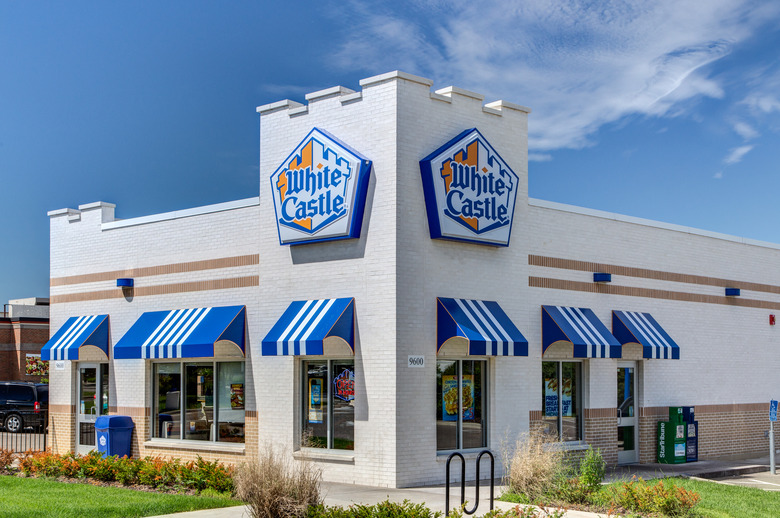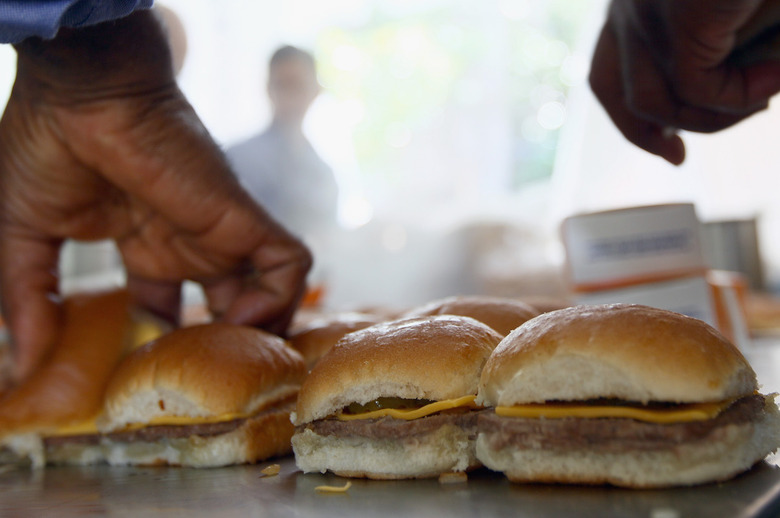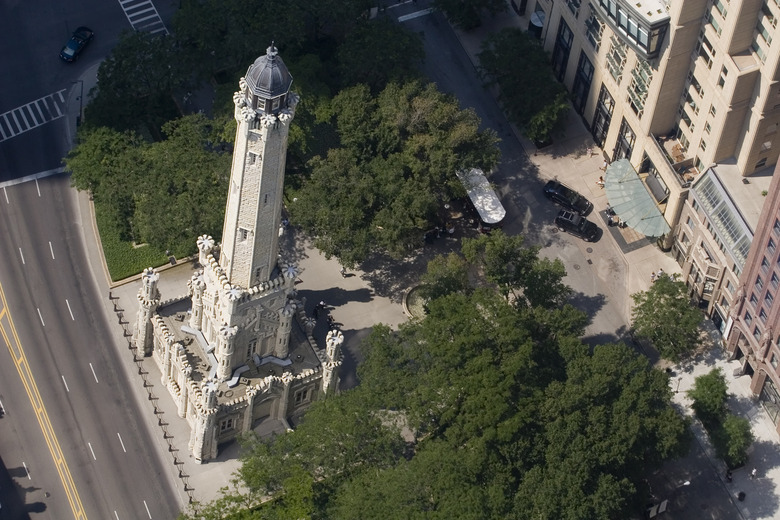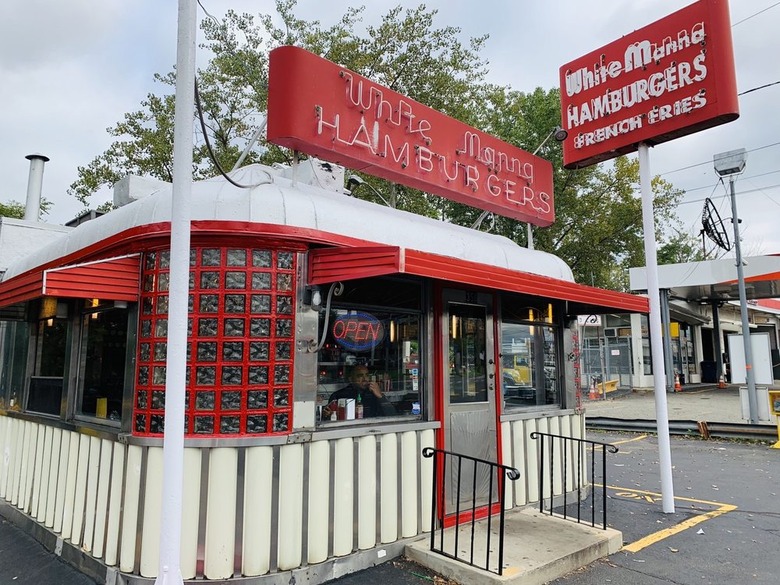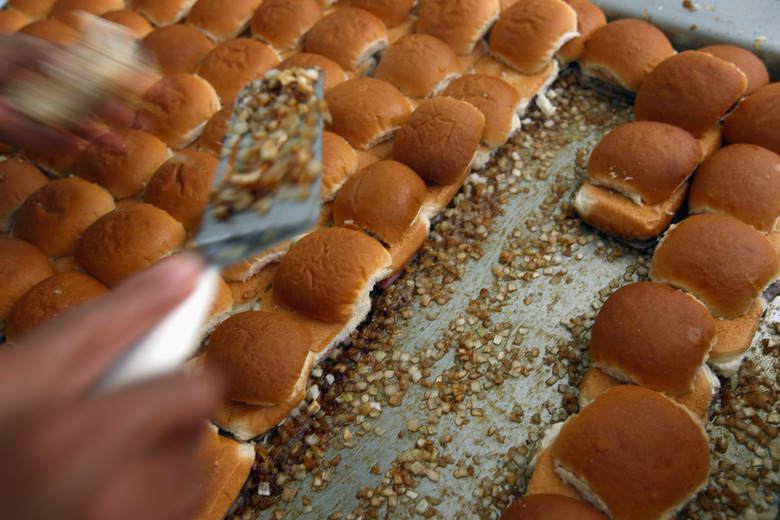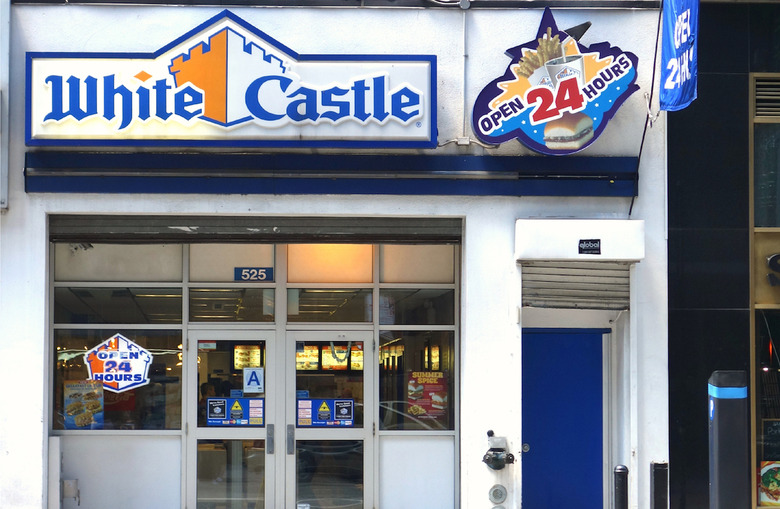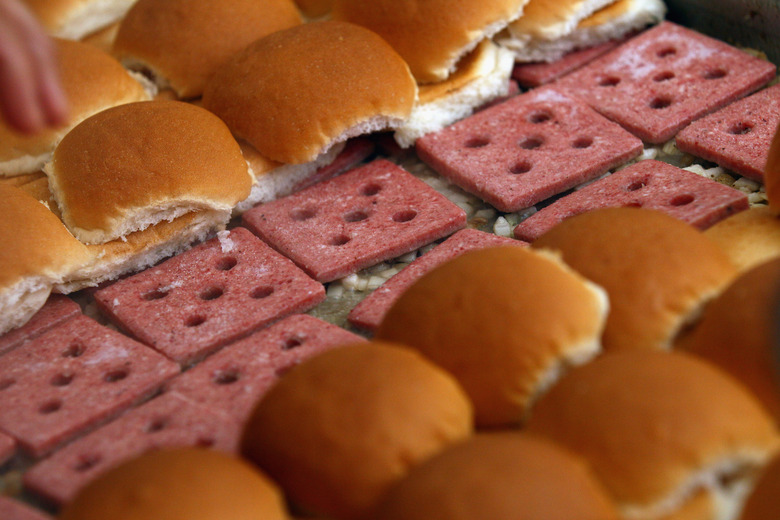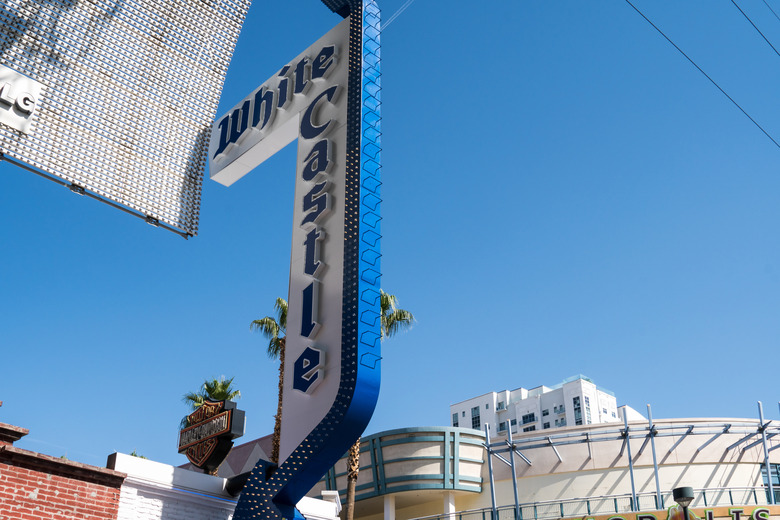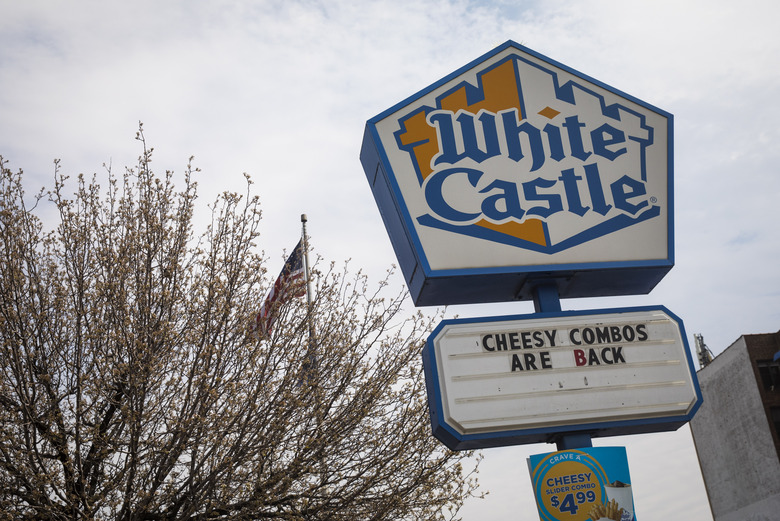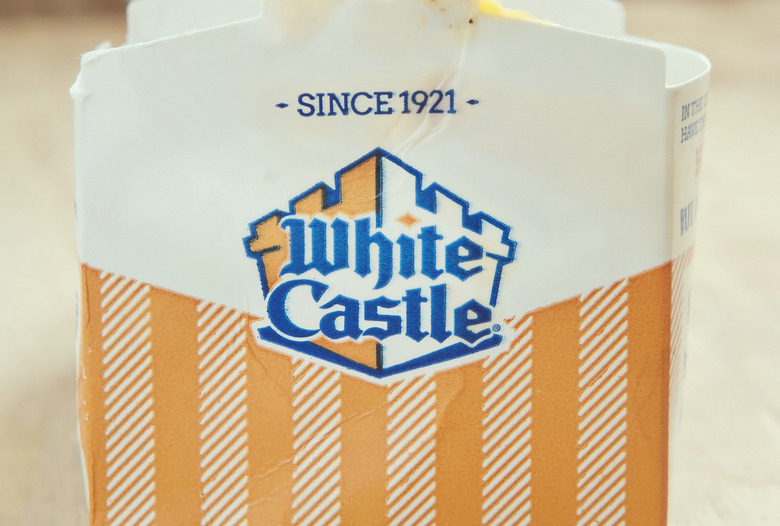9 Things You Didn't Know About White Castle
We've all been there: sitting in class or at work, watching television, or playing sports, when the urge hits. White Castle is calling your name, and there's nothing you can do about it. White Castle is more than just a place that serves a craveable soft little hamburger on a tiny bun, though: It's a legendary institution, credited as the very first fast food chain in the United States. Read on for nine things you didn't know about this burger institution.
Cleanliness Was the Secret to Its Success
Ground beef was one of the most feared food items in America when the first White Castle opened, largely because of the success of Upton Sinclair's 1906 exposé The Jungle, which made the poor sanitation practices of the meat packing industry public. To make sure that nobody thought that their burgers were anything but 100 percent clean, the buildings were painted completely white, the interiors were made of stainless steel, and the employees all wore spotless uniforms.
Early Locations Were Modeled After Chicago’s Water Tower Pumping Station
The chain's buildings were all prefabricated, and were modeled after the Chicago Water Tower, which features a parapet, octagonal buttresses, and crenelated towers. A descendant of that original design is still in use today.
It Spawned Dozens of Imitators
As soon as White Castle began to take off, dozens of imitators began to sprout up, copying the restaurant's style and using names as similar to White Castle as they could get away with, including White Fortress, White Diamond, White Hut, White Manna (which is still around in New Jersey), White Tower, Blue Castle, Red Castle, Royal Castle, Silver Castle, and Blue Bell.
Founder Walt Anderson Is Credited with Inventing Fast Food as We Know It
Anderson is generally regarded as having invented the hamburger bun, as well as the kitchen assembly line and standardized cooking methods, making sure that every burger across every location was exactly the same. What Henry Ford did for cars, Anderson did for burgers.
The Chain Had to Create Its Own Infrastructure
Because fast food chains didn't exist at the time, White Castle needed to build out all of its own infrastructure. The chain opened centralized bakeries, meat supply plants, and warehouses; set up a company to produce paper hats and other paper products; and even created a subsidiary to manufacture the building materials used to construct new locations.
The Slider-Making Process Has Changed Drastically Over the Years
When the chain first opened, balls of ground beef (18 to a pound) were placed on a hot griddle and topped with a handful of thin-sliced onions. These were then flipped and the ball was squashed into a thin patty, with both sides of the bun placed atop it to steam. A slice of pickle was added after grilling, and customers could add their own condiments. Today, 30 frozen square patties (which have five holes in them for even cooking) are set on the griddle atop rehydrated onions, and they're not flipped at all.
It’s Still Family-Owned
Ingram bought out Anderson in 1933, and to this day the company is privately held. Ingram was followed as head of the company by his son, Edgar, and his son, Bill, is currently the company's CEO. Bill's daughter, Lisa Ingram, is president and COO.
There Are No Franchises, and It’s Remained Small on Purpose
There are only about 420 White Castles nationwide, compared to more than 14,000 McDonald's. This is because the Ingrams refuse to take on debt or sell any franchises; all locations are company-owned.
There Are No Locations in Kansas, Even Though the Company Was Founded There
By 1936, White Castle's distribution stretched from Wichita to New York, so Ingram moved the headquarters from Wichita to the more centrally located Columbus, Ohio. Wichita locations were shut down later that year because they were underperforming, and no locations are currently open in the state. It's one of the few fast food chains with no location in its original city, but there's currently a push to bring it back.
